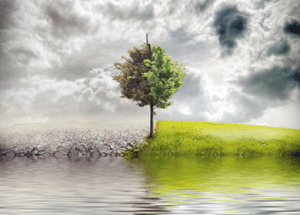According to researchers America is in the middle of a water crisis. Although you may not feel the pinch at home, it is happening on a larger scale. The United States is not alone in this scary situation. Other countries such as Russia, China and other parts of Asia are also reporting shortages.
Those who are following this water scarcity closely note that drought can be blamed for much of the problems. Heading into the end of March, over half of the lower states in our country noted extreme dry conditions and moderate drought. Over 80% of seven states, identified for water shortage, are considered to be in a severe drought. The seven states include Oklahoma, Wyoming, Colorado, South Dakota, New Mexico, Kansas and Nebraska.
Water covers 70% of the surface of the earth; however, a mere 2.5% is fresh water and only 0.0006 percent available in the world. This means that the entire population of the world is in heavy competition for an extremely meager amount of water.
From East to West
Since the drought began in 2012, it has made a steady move westward, sucking the life out of the earth in its path. The United States Department of Agriculture (USDA) notes that when the drought started, it had a disastrous impact on hay production, which resulted in a shortage of feed, causing livestock prices to rise. States that were hit first included Indiana, Ohio and Michigan.
When the summer of 2012 arrived, almost 60% of rangeland in America had exceptionally poor or poor conditions according to the USDA. As the drought moved westward, states in the middle of the country such as Colorado, Oklahoma, Kansas and Nebraska were hit. Widespread crop and pasture losses, water shortages in reservoirs, wells and streams may result if exceptionally dry conditions persevere. Officials in north-central Oklahoma have already declared a state of emergency due to historically low water reservoir conditions. Over $150 billion dollars in damages have been attributed to drought conditions in 2012 alone.
Economic Impacts
Drought affects all parts of our environment and our communities. Economic impacts include farmers who lose money when their crops are destroyed, cost of irrigation increases, cost to feed animals increases, businesses that depend on agriculture lose money, wildfires destroy valuable timber, power supplies run by hydroelectric are threatened which pushes electric prices up, cost for transporting goods via waterways rises and the price of food increases.
 Environmental Impacts
Environmental Impacts
Animals and plants need water just like humans, and when a drought occurs their habitat may be damaged. While some damage may be temporary, many impacts are long term. With a loss of food and water for animals, populations are decreased. Migration is impacted, wetlands are threatened, there is a great deal of wind and water erosion of soils and the quality of the soil decreases.
Social Impacts
When drought gets severe the health and safety of people may be a concern. There are heightened rates of depression and anxiety as a result of economic losses, health problems related to dust and poor water quality may occur, incomes are reduced, and people may move from their family farms to cities creating crowded conditions and job competition.
What to Do
With no end to the dry conditions in sight for most of the country, individual homeowners should do what they can do to become as self sufficient as possible. Everything from cutting back on home water use to installing rain collections systems and growing food in a raised garden system and getting some chickens can help. The less you have to depend on the huge supermarkets for the bulk of your food the better, especially as prices rise.
– The Alternative Daily
Sources:
http://www.huffingtonpost.com/news/us-drought-2013
http://www.huffingtonpost.com/2013/03/30/states-running-out-of-water_n_2984979.html

